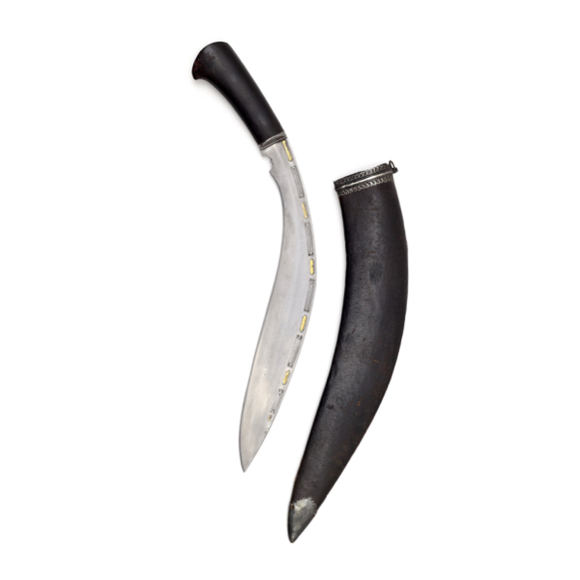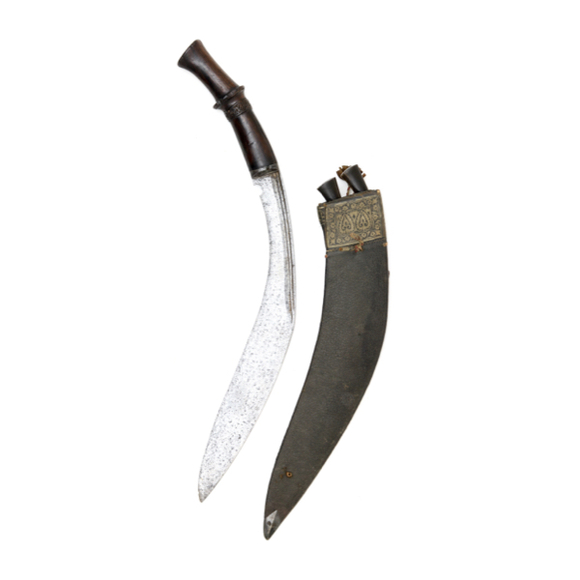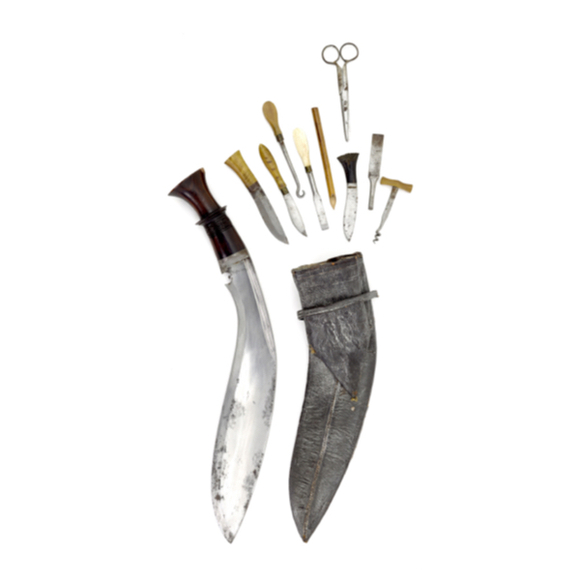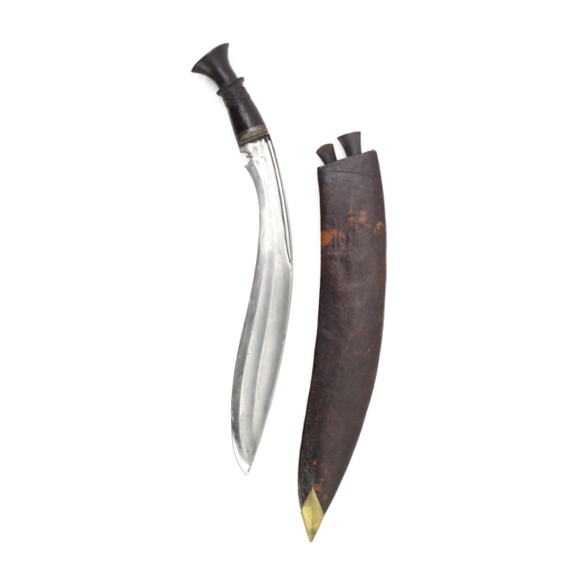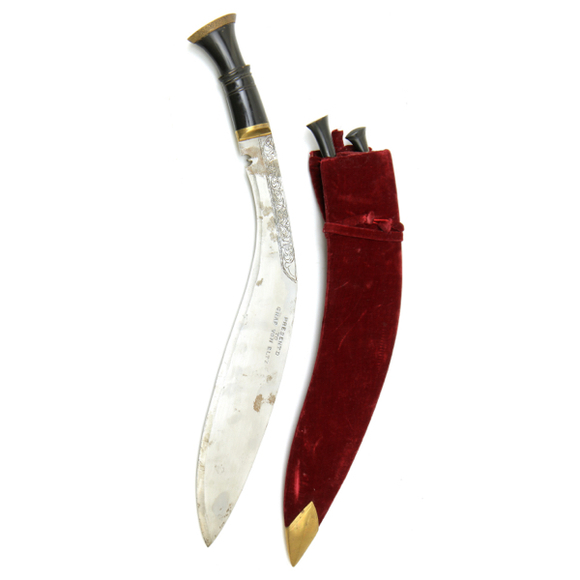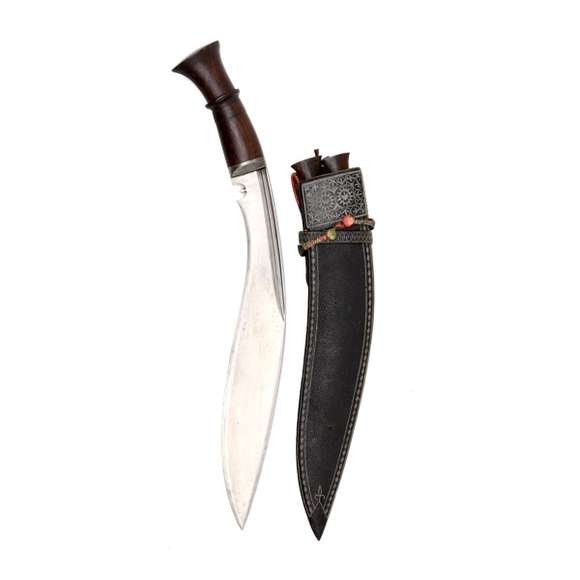With a very fine Nepalese blade, but kard-like hilt and scabbard.
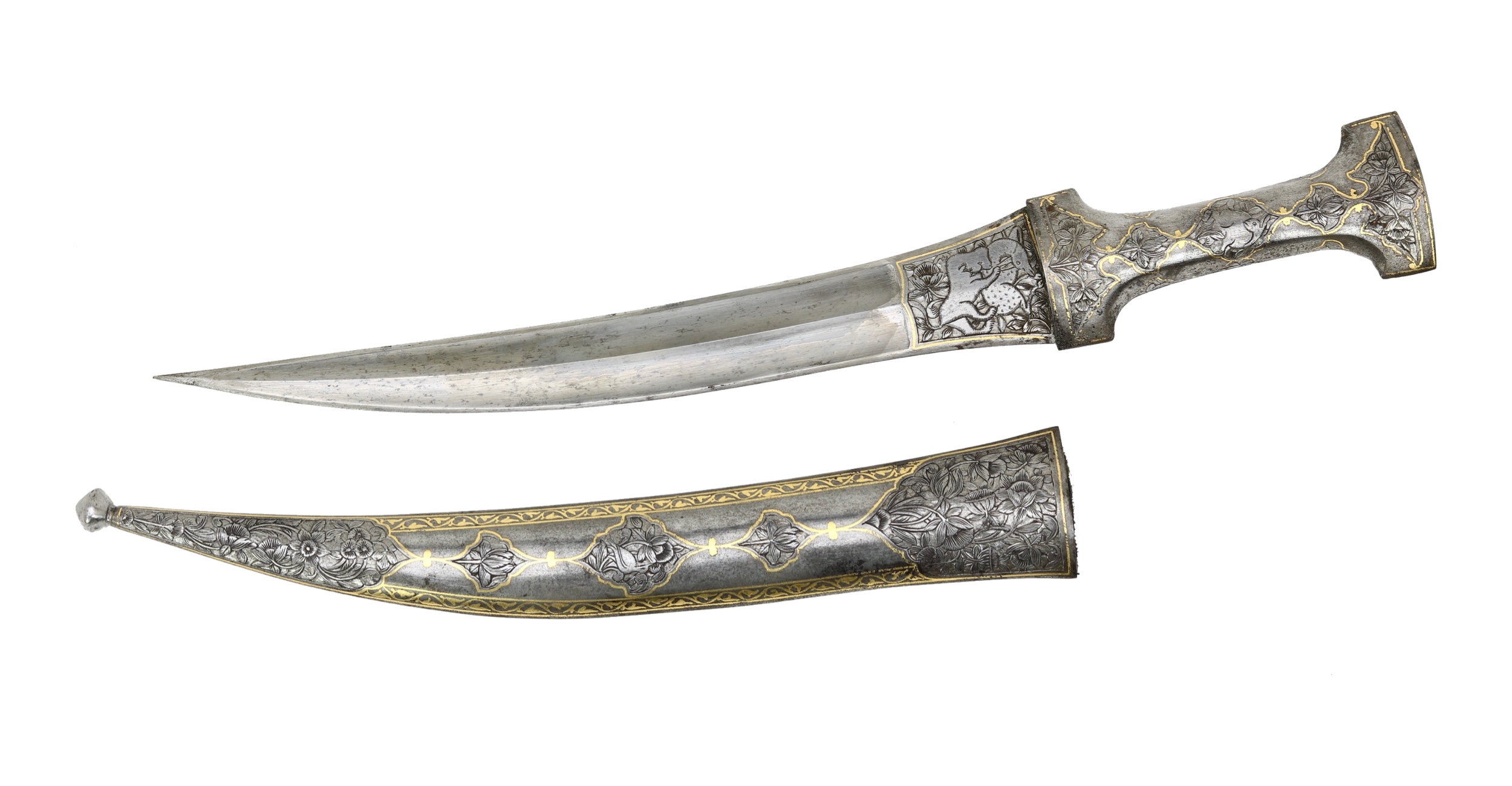
41.2 cm
28.7 cm
Base 4 mm
Middle 3.5 mm
Thickening at tip 3.5 mm
Base 45.5 mm
Middle 30 mm
Tip 7 mm
Without scabbard 260 grams
Persia, Qajar dynasty
Steel, gold, wood, leather, lacquer
19th century
Introduction
The khanjar is a type of curved Persian dagger that was used from about the 15th century to the early 19th century. Most examples that remain today date from the Qajar dynasty of 1789 to 1925. It was primarily worn on the right side fo the body, tucked in the belt.
For more information on the type, see the glossary article: khanjar
This example
A nice and fairly large all-steel example. The blade has a clearly defined central ridge and two sunken panels, with a moderate thicknening near the tip. The geometry is precise and all contours are intact, with no damage or signs of excessive sharpening. The base of the blade is chiseled on both sides with a scene of a tiger attacking an antilope, a common motif on Persian arms. The scene is framed within a golden line done in overlay on a finely crosshatched background. The blade is held to the hilt by means of green resin.
The typical I-shaped hilt is made of two pieces of steel, welded together. It is decorated with a series of cartouches with chiseled decorative elements including hare, birds, and flowers among which lotuses. The cartouches are also lined with golden overlay. On the pommel is chiseled what seems to be an aardvark.
The scabbard is made of two halves of wood, joined together and covered with thick steel plating. It follows the style of the hilt, with sunken panels containing finely chiseled floral motifs and birds, all framed in gold. The scabbard's edges are also decorated with bands of gold overlay. At the scabbard's end it a bud finial.
The quality of the chiseling is higher than found on most daggers of this type and period.
Condition
In very good condition throughout. Blade and scabbard in near-excellent condition. There is some more pitting on the hilt due to more handling in this area.
Notable examples
There is a very nice and in many ways, comparable example in the Metropolitan Museum, accession number 32.75.266. It was collected by Giovanni Pertinax Morosini of New York, and inherited by his daughter in 1908, who bequeathed it to the museum upon her death in 1932. Unfortunately, the scabbard of this example is lost.
Two other similar examples were in the Henry Moser Charlottenfels collection, and are described in Rudolf Zeller, Ernst F. Rohrer; "Orientalische Sammlung Henri Moser-Charlottenfels: beschreibender Katalog der Waffensammlung". Bernisches historisches Museum. Wyss, Bern. 1955. Pages 153-155 and plate XXXIV.
And finally, a very similar piece is in the Freer Gallery, accession number 1939-44a-b, carries an inscription stating it was made in Shiraz in 1777 AD.
Conclusion
A very nice example of a Qajar period khanjar, constructed entirely out of steel and with finely chiseled decoration. It was probably produced in Shiraz, Persia, in the 19th century.

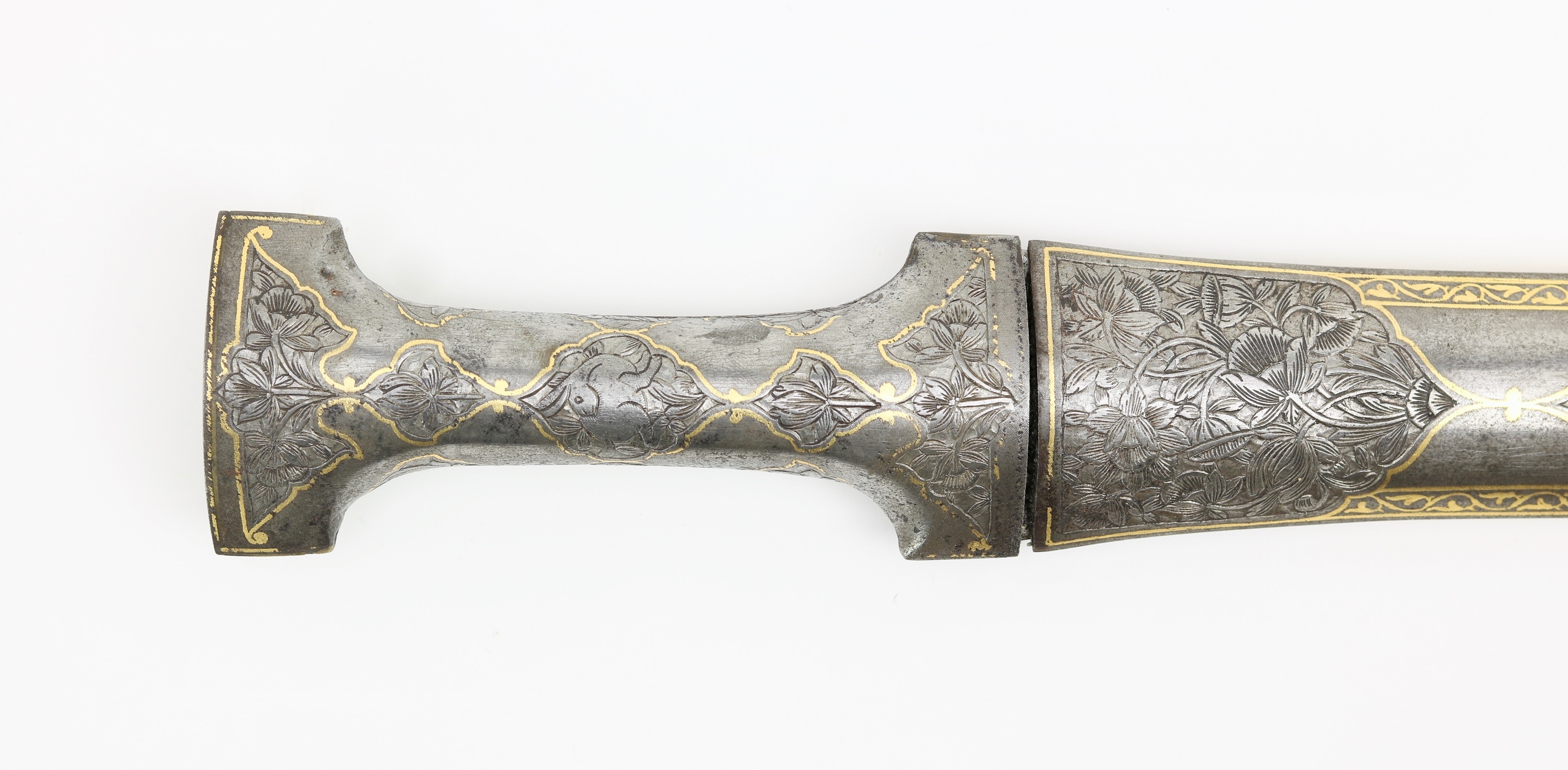
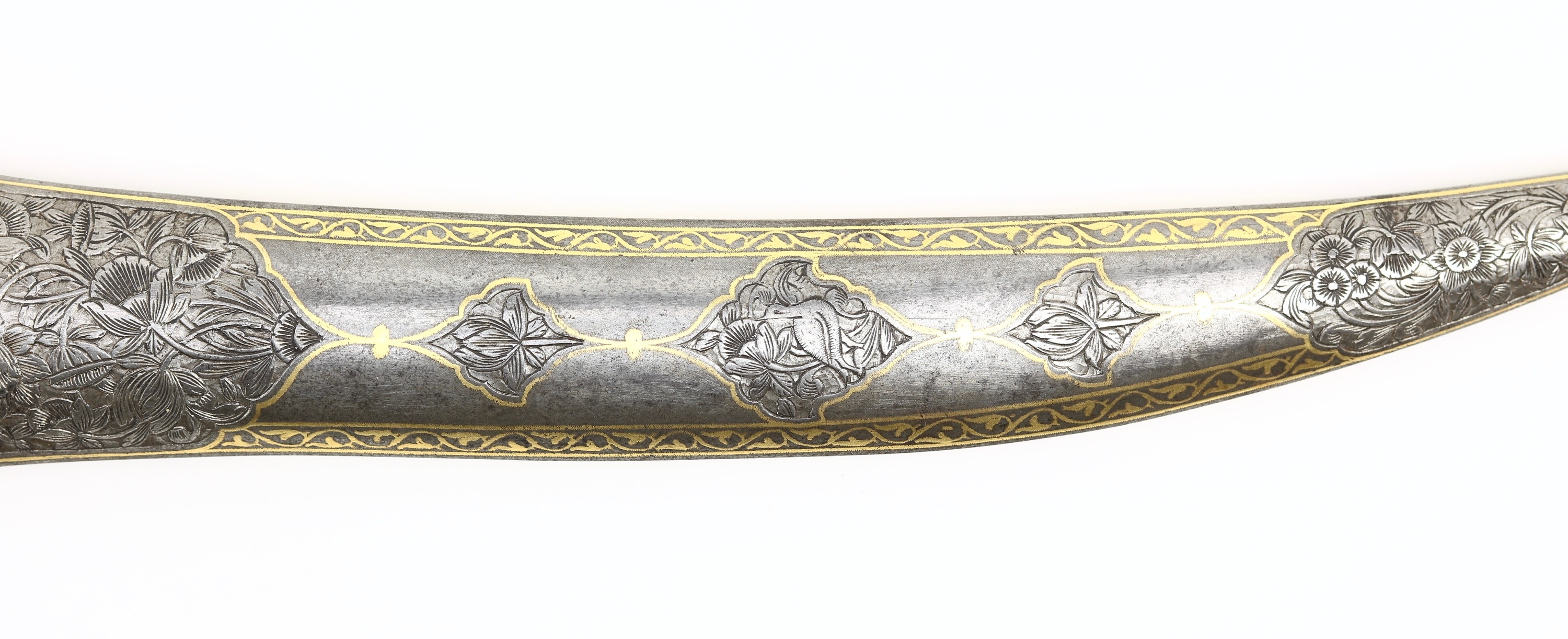
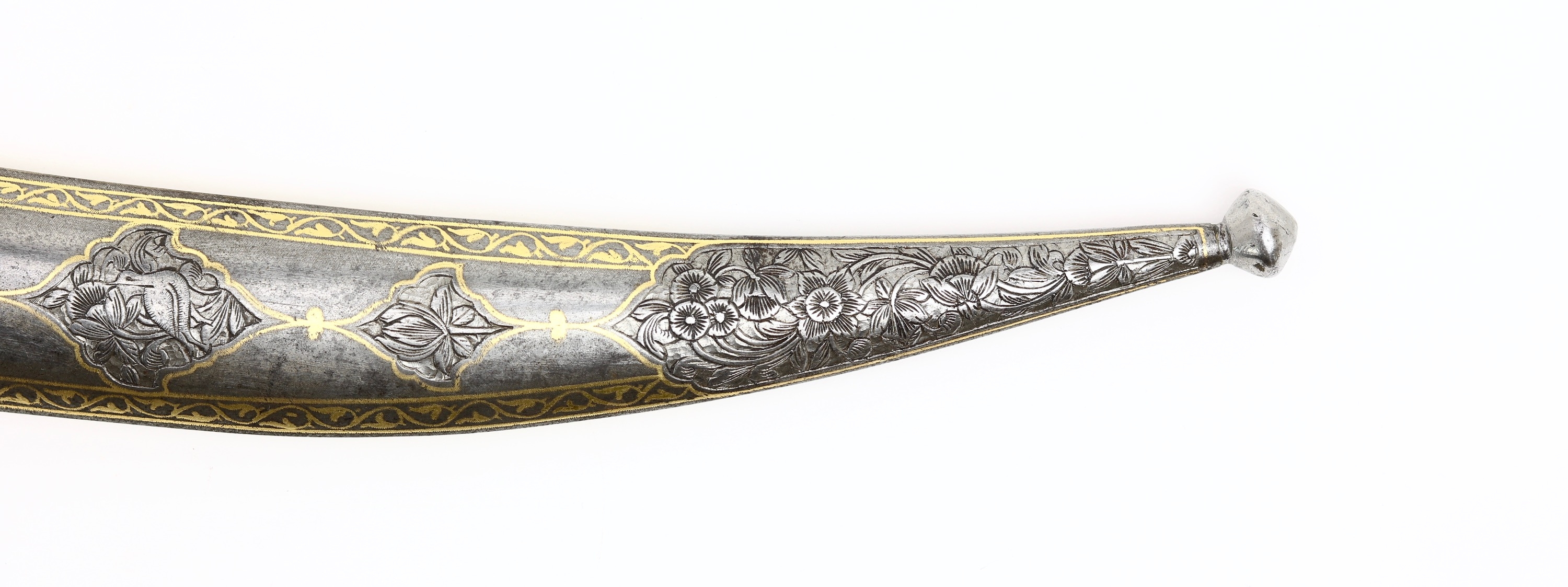

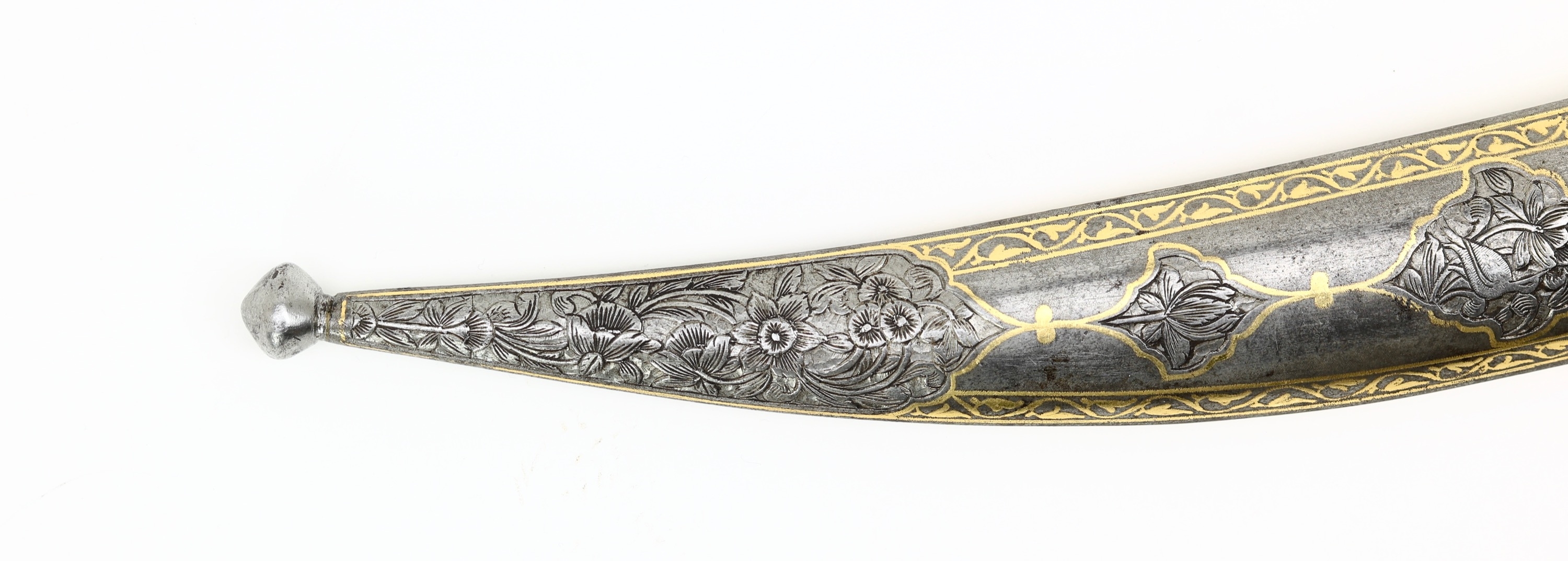
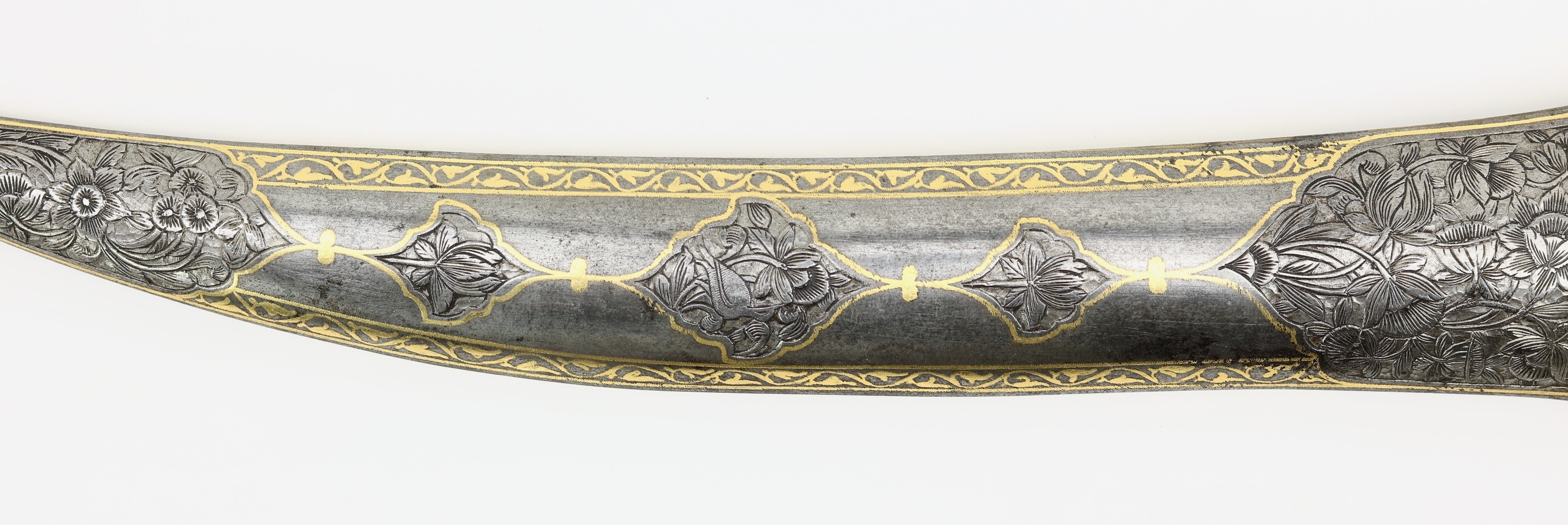
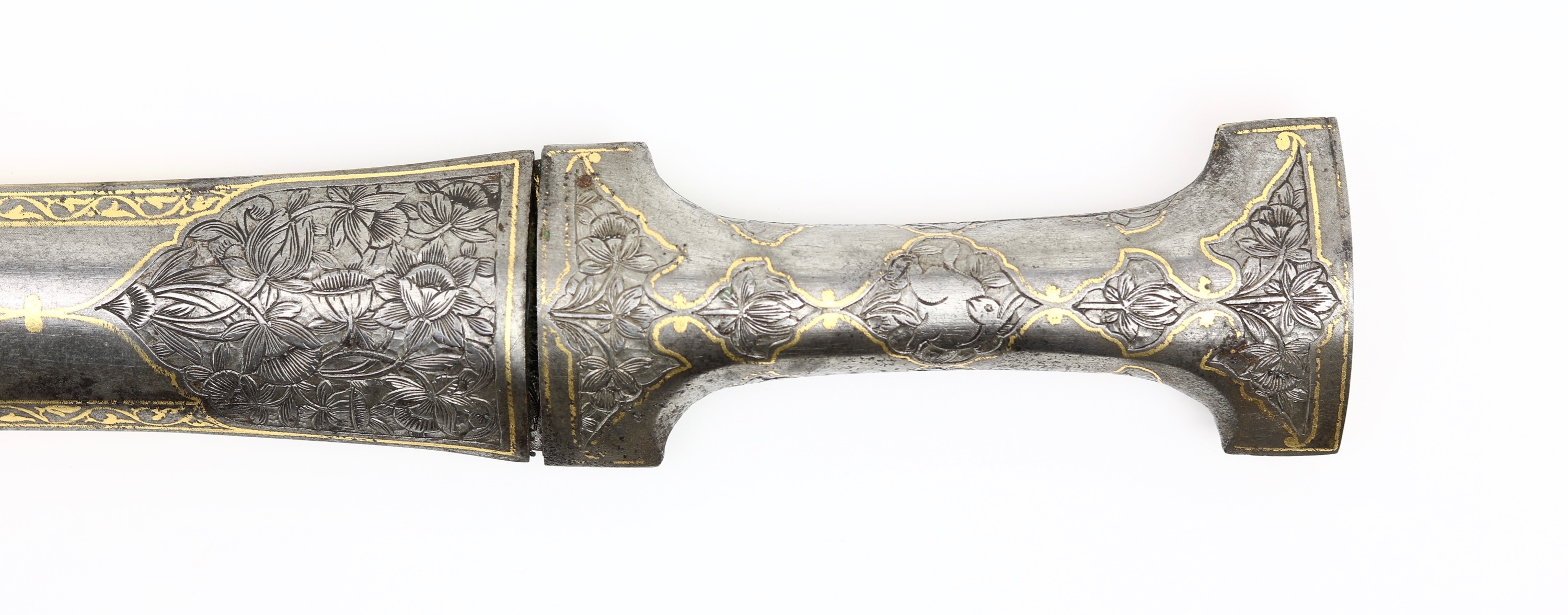


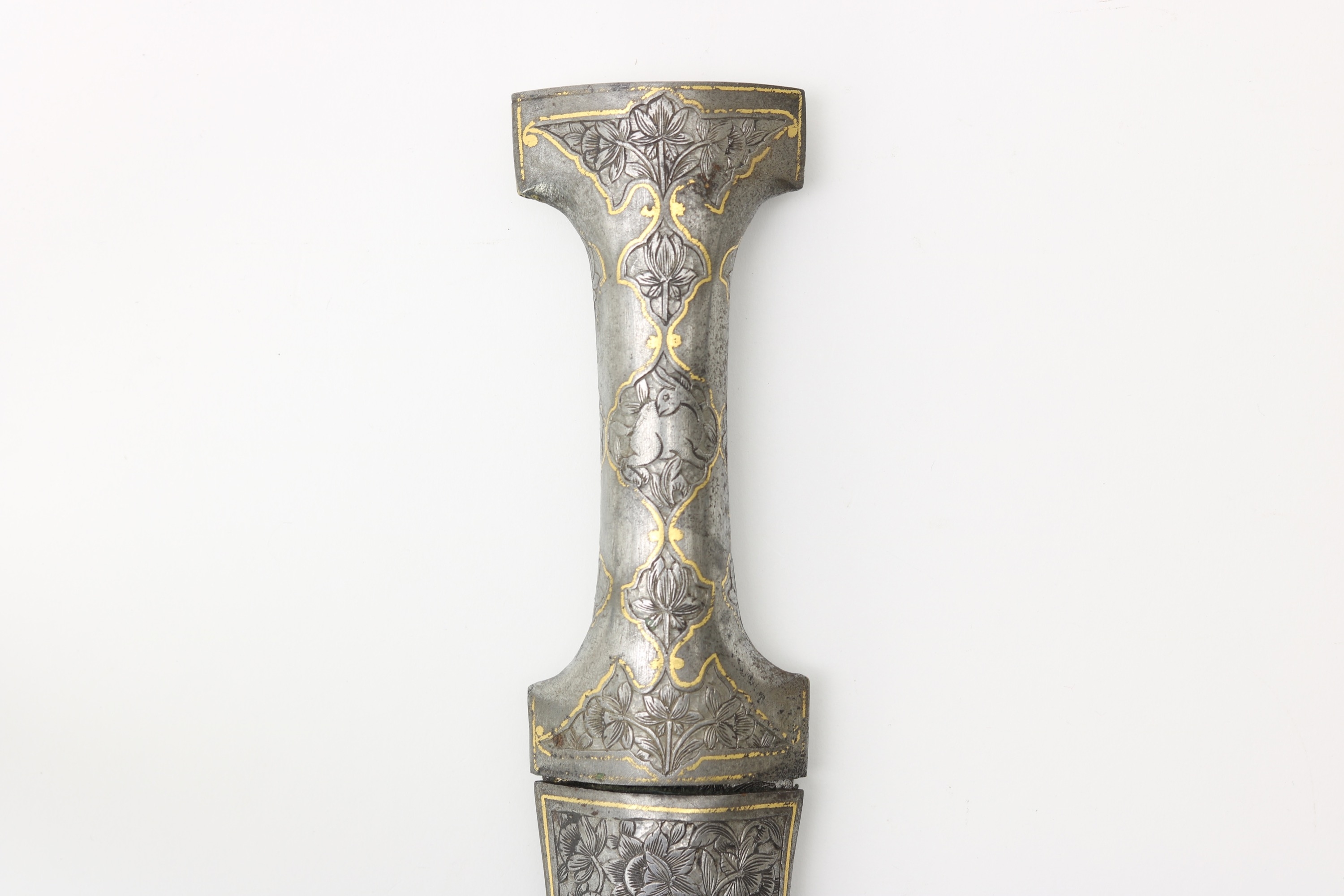


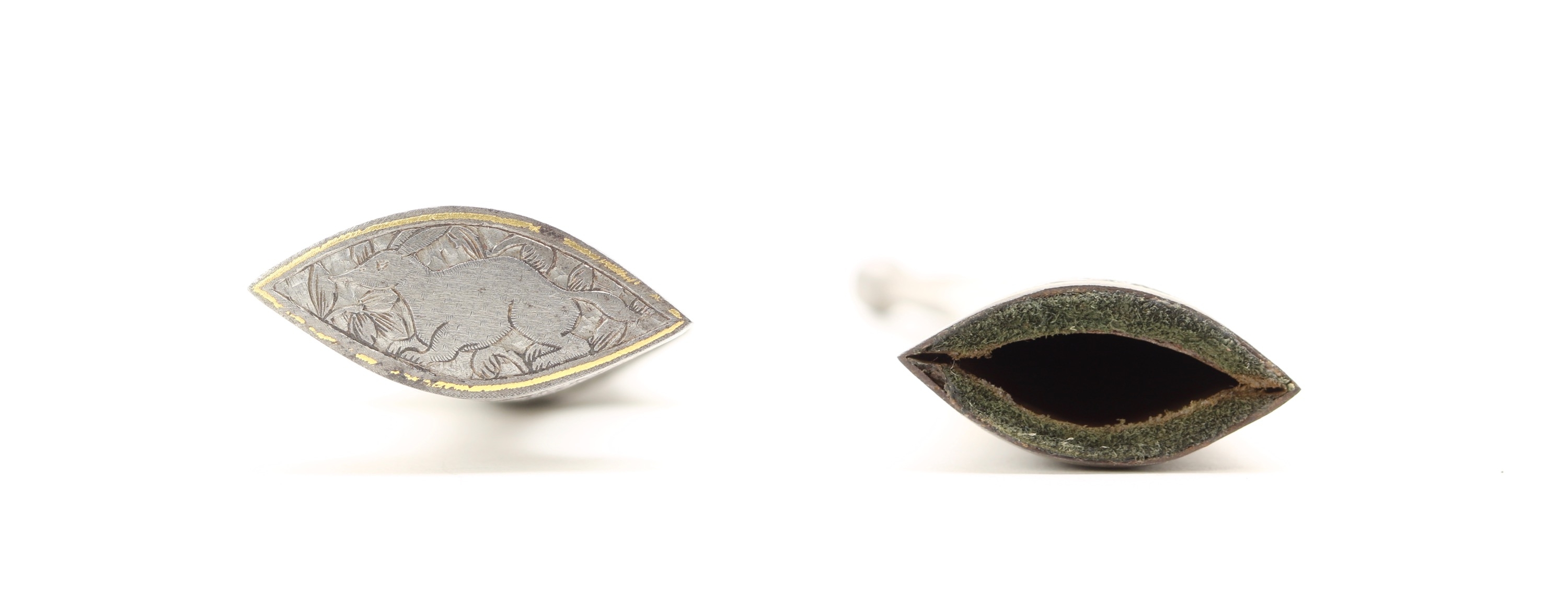
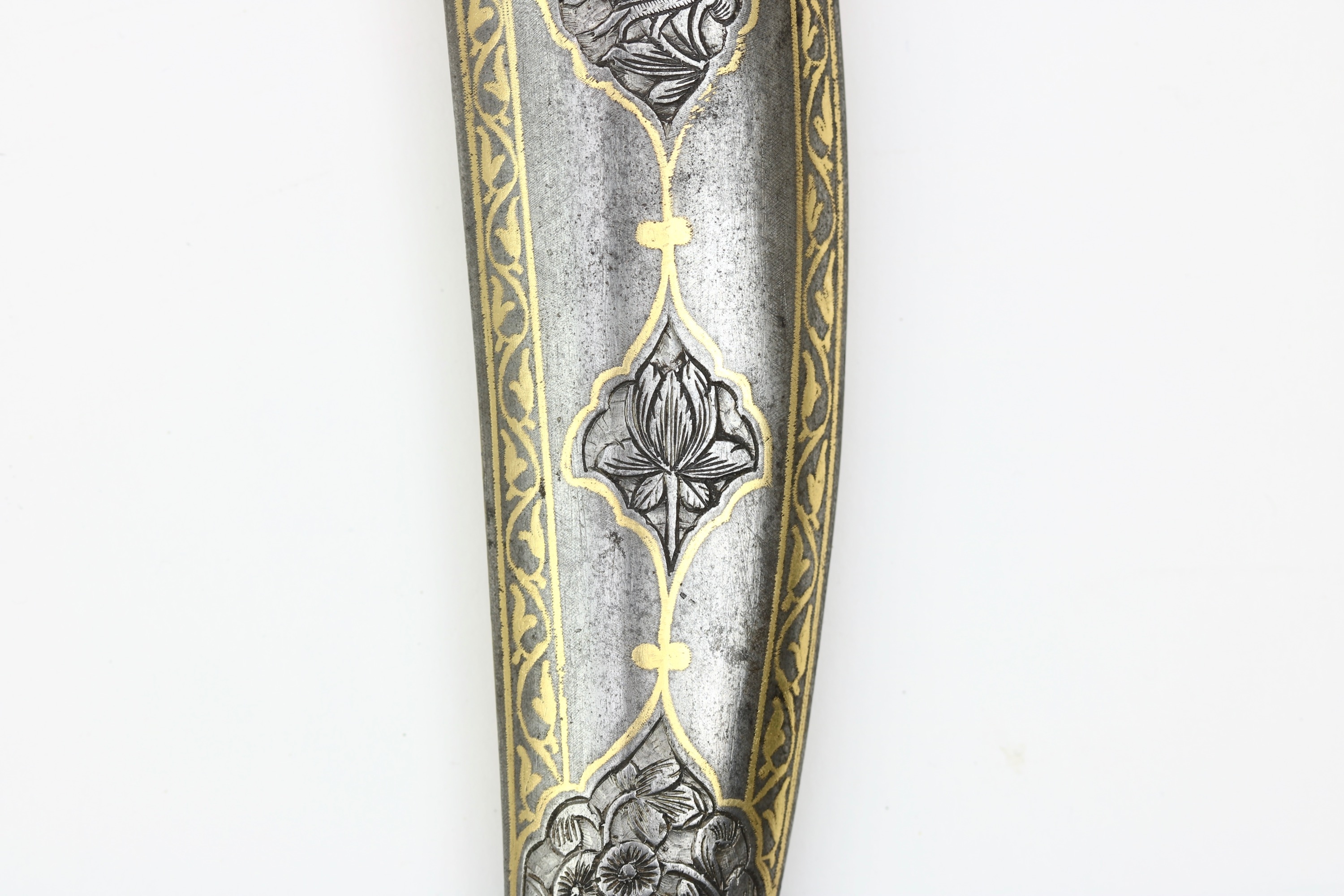

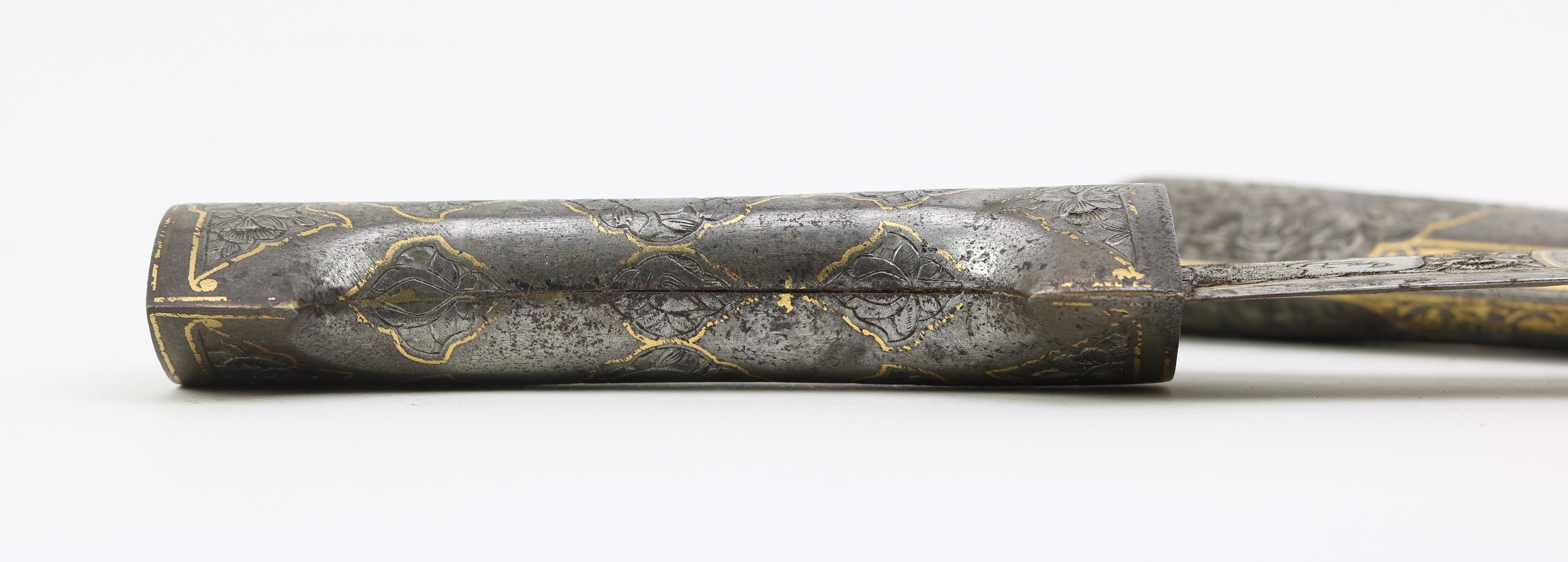
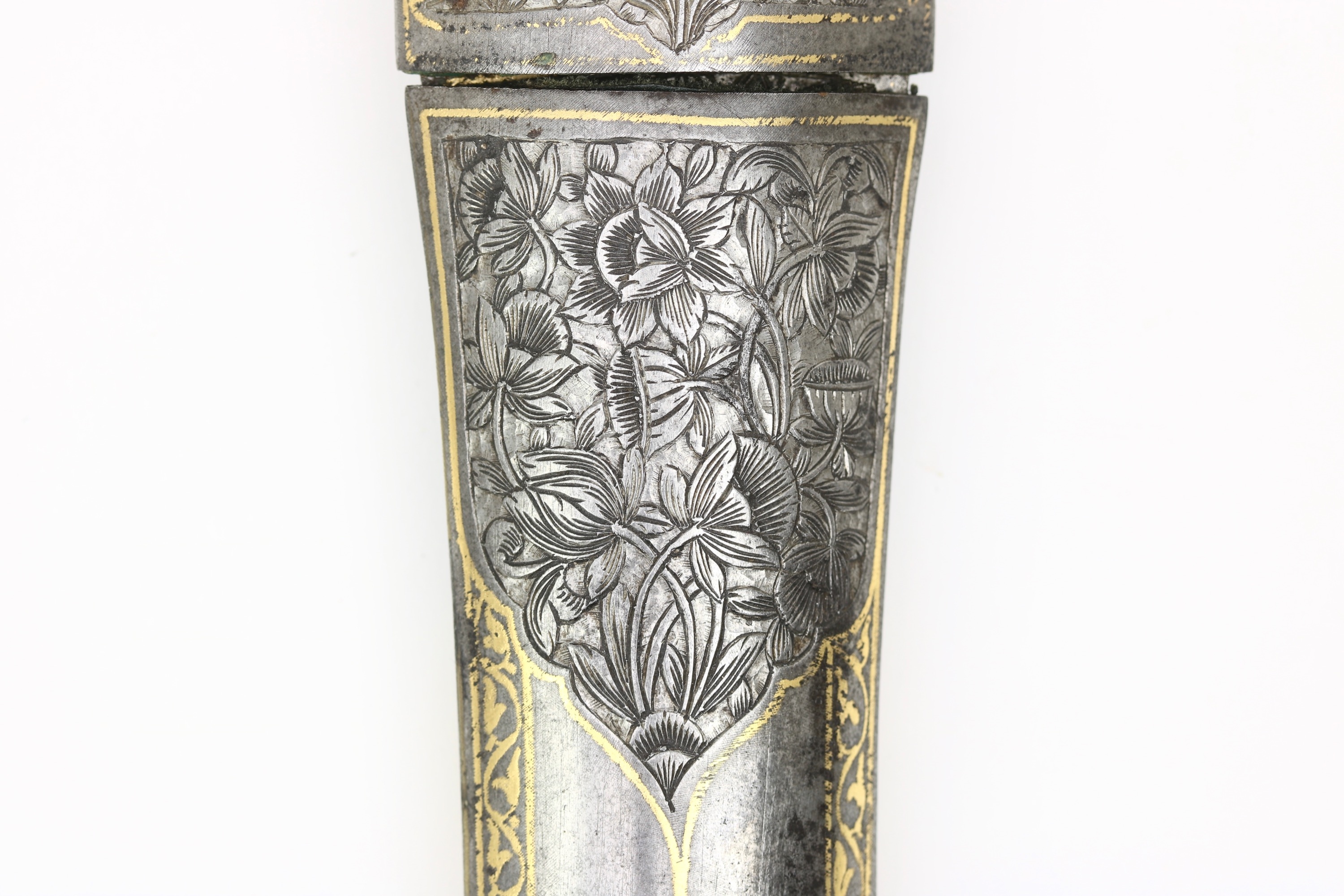
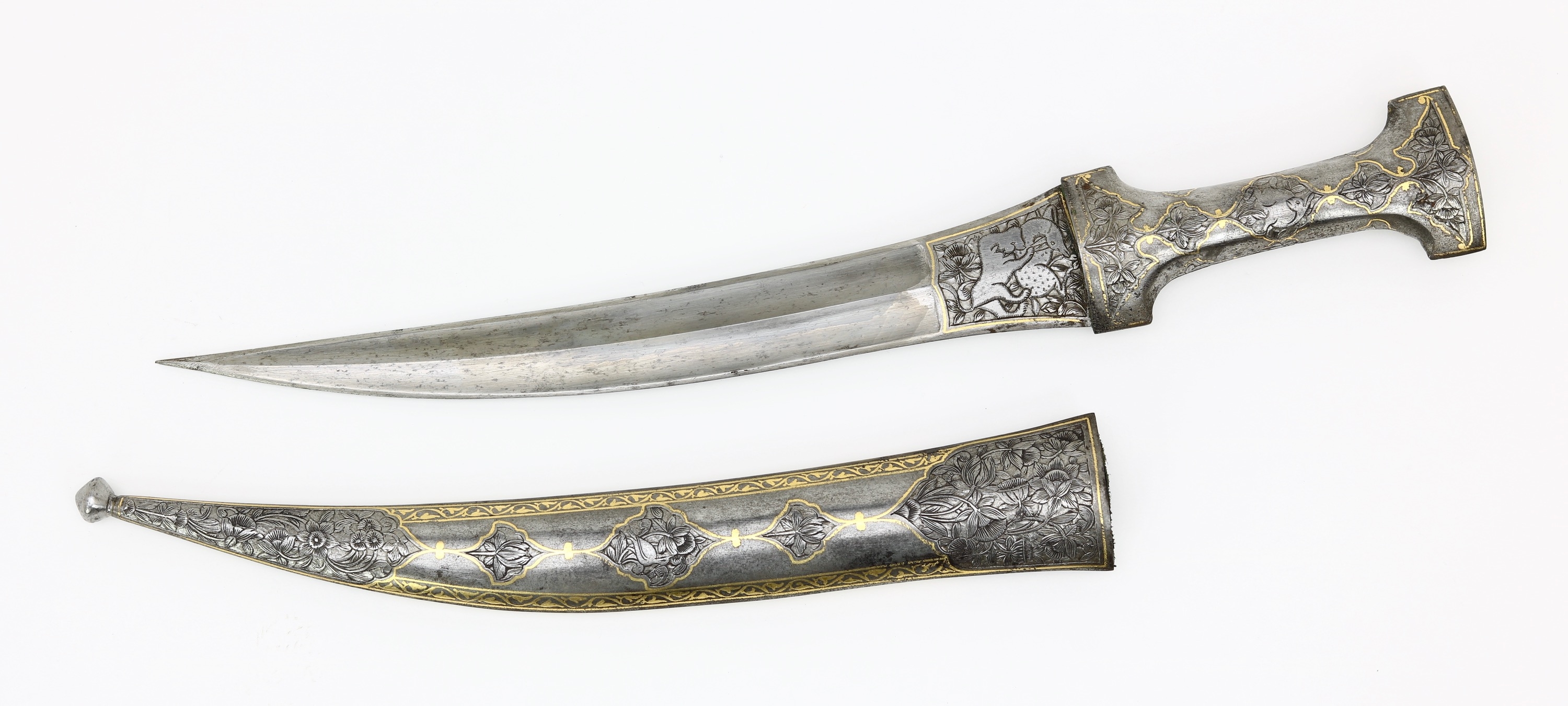
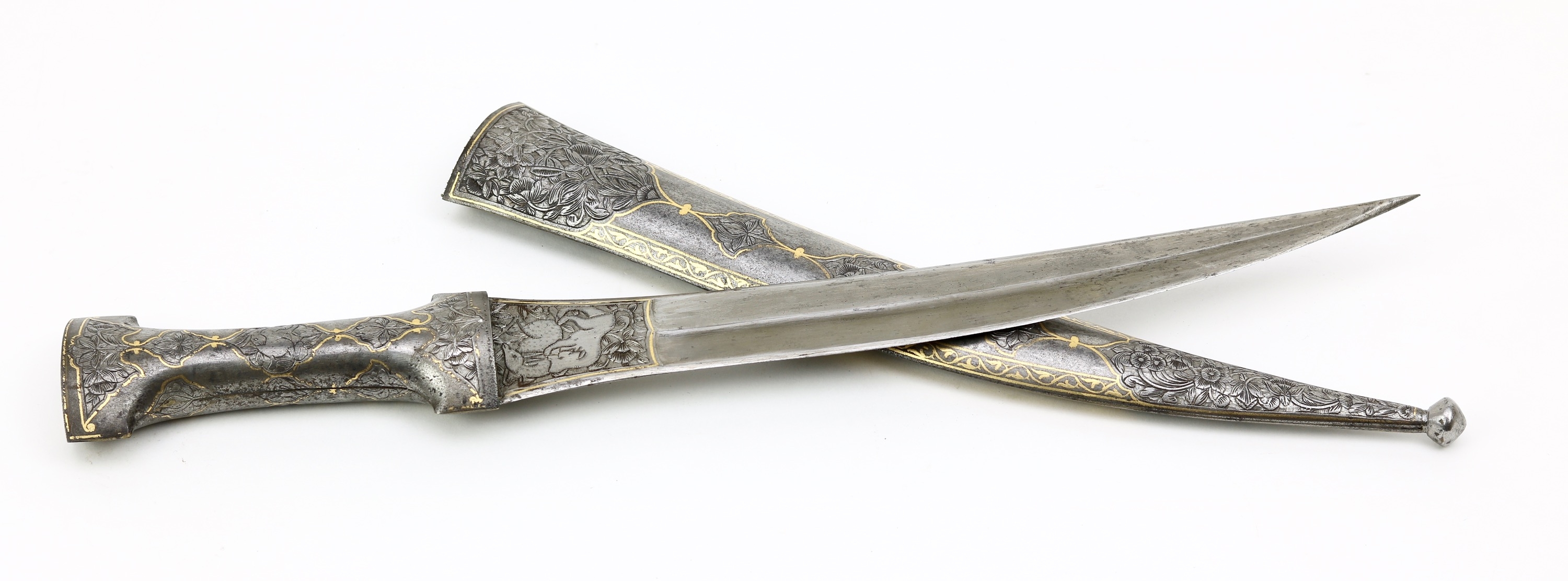
Early type with very shallow notch in the blade and little flare in the pommel.
20th century military khukurī with many different tools in its back pocket.
Very large presentation kukri from the Sundarijal Arsenal in Nepal.
An understated, elegant khukuri of substantial proportions with fine layered blade.

